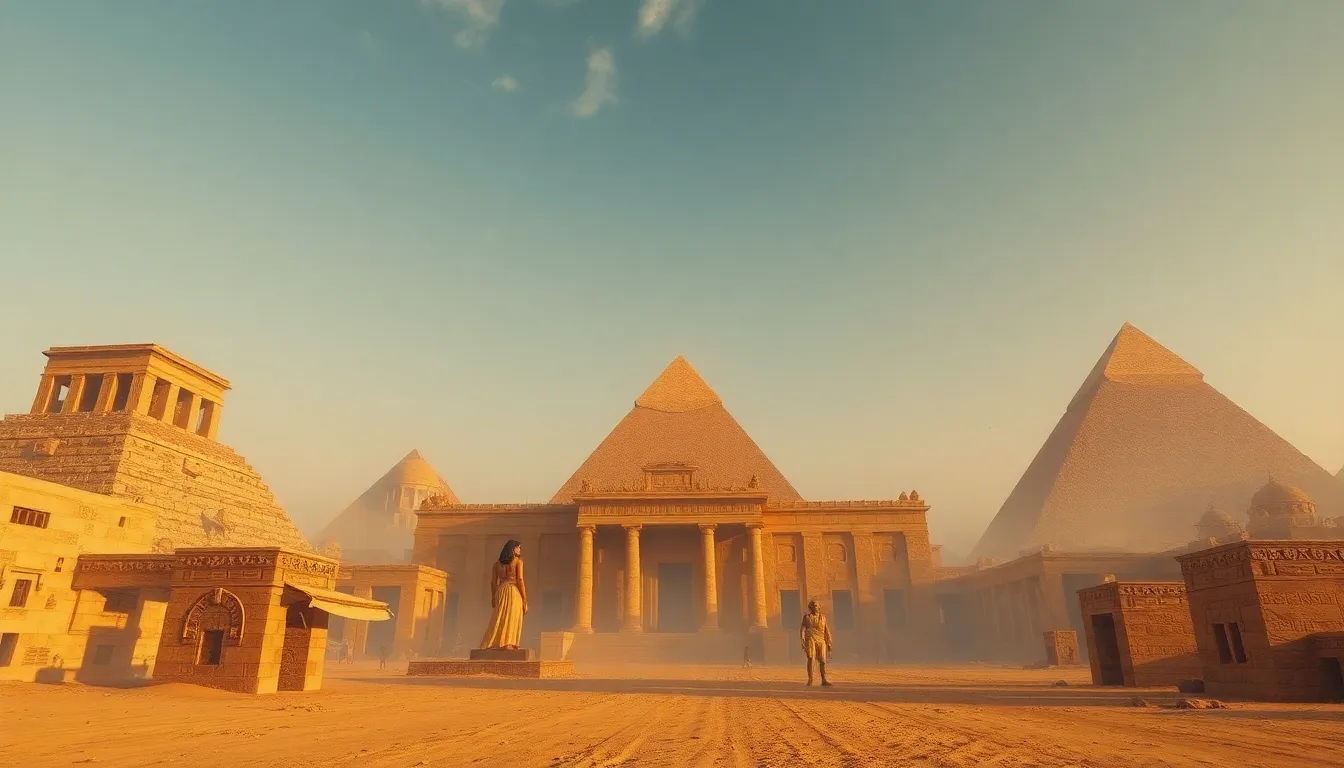The Importance of the Afterlife in Egyptian Culture
I. Introduction
Ancient Egyptian civilization is renowned for its rich tapestry of beliefs, practices, and mythology. Central to their worldview was the profound significance of the afterlife, which shaped their entire way of living. The Egyptians believed that life did not end with death; rather, it was a transition to another realm. This notion of an afterlife influenced their rituals, art, and social structures, making it a cornerstone of their culture.
The purpose of this article is to explore the multifaceted beliefs surrounding the afterlife in ancient Egypt, examining its historical context, cultural implications, and lasting legacy.
II. Historical Context of Egyptian Afterlife Beliefs
The concept of the afterlife in ancient Egypt evolved significantly from the early dynastic periods through to the Ptolemaic era. Initially, the afterlife was viewed as a shadowy continuation of life on earth, but over time, it became a more elaborate and hopeful vision of existence.
- Early Dynastic Period: The earliest beliefs focused on the continuation of life, leading to simple burial practices.
- Old Kingdom: The development of pyramid construction symbolized a more complex understanding of the afterlife.
- Middle Kingdom: Texts such as the Coffin Texts began to emerge, illustrating beliefs about death and the afterlife.
- New Kingdom: The Book of the Dead became a significant text, offering guidance for the deceased in the afterlife.
Artifacts such as funerary objects, tomb paintings, and inscriptions provide invaluable insights into their beliefs. Mythology played a crucial role in shaping perceptions, with stories of gods and the afterlife serving to comfort and guide the living.
III. The Role of the Pharaoh in the Afterlife
The Pharaoh held a unique and divine status in ancient Egyptian society, which significantly impacted afterlife beliefs. As a mediator between gods and humans, the Pharaoh’s journey after death was seen as paramount.
- Divine Status: The Pharaoh was considered a living god, and his afterlife was viewed as essential for the country’s prosperity.
- Burial Practices: The construction of grand tombs, such as the pyramids, reflected the Pharaoh’s importance and the belief in an eternal existence.
- Journey in the Afterlife: Upon death, the Pharaoh would navigate challenges, ultimately aiming to join the gods in the Field of Reeds, a paradise akin to heaven.
IV. The Concept of Ma’at and Its Relation to the Afterlife
Ma’at, the ancient Egyptian concept of truth, balance, and order, was integral to their understanding of the afterlife. It represented the cosmic order that the gods established and was a guiding principle for ethical living.
- Definition and Significance: Ma’at symbolized the harmony of the universe and was essential for maintaining balance in both life and death.
- Judgment of the Soul: The Weighing of the Heart ceremony determined the fate of the deceased, where their heart was weighed against the feather of Ma’at.
- Consequences: Living in accordance with Ma’at ensured a favorable judgment, leading to eternal life in the afterlife, while a life of wrongdoing resulted in annihilation.
V. Funerary Practices and Rituals
Funerary practices in ancient Egypt were elaborate and deeply ritualistic, designed to ensure the safe passage of the deceased to the afterlife.
- Mummification: The process of preserving the body was believed to be vital for the afterlife, allowing the deceased to recognize and inhabit their physical form.
- Grave Goods: Items such as food, jewelry, and tools were included in tombs as offerings for the deceased’s journey, reflecting their status and needs in the afterlife.
- Role of Rituals: Rituals performed by priests, such as the Opening of the Mouth ceremony, were crucial in preparing the deceased for the afterlife.
VI. Deities Associated with the Afterlife
Several deities in ancient Egyptian mythology were closely associated with the afterlife, each playing a unique role in the journey of the deceased.
- Osiris: God of the afterlife, resurrection, and fertility, Osiris was the ruler of the underworld and a symbol of eternal life.
- Anubis: The god of mummification and the afterlife, Anubis was depicted as a jackal and was responsible for guiding souls to the afterlife.
- Isis: The goddess of magic and motherhood, Isis played a crucial role in the resurrection of Osiris and was invoked for protection in the afterlife.
Myths surrounding these deities often influenced daily life, as Egyptians sought to align themselves with these divine figures to ensure protection and favor in the afterlife.
VII. The Afterlife in Art and Literature
The afterlife was a prevalent theme in ancient Egyptian art and literature, serving not only as a reflection of their beliefs but also as a means to communicate with the divine.
- Tomb Paintings: Tomb walls were adorned with vivid depictions of the afterlife, illustrating scenes of daily life, divine interactions, and the journey of the soul.
- Literary Texts: The Book of the Dead, a collection of spells and prayers, was designed to assist the deceased in navigating the afterlife.
- Cultural Legacy: The artistic and literary expressions of the afterlife have influenced cultures throughout history, contributing to our understanding of death and immortality.
VIII. Conclusion
The significance of the afterlife in ancient Egyptian culture cannot be overstated. It shaped their societal structures, influenced their practices, and left an indelible mark on their art and literature. The belief in an eternal existence provided comfort and purpose, guiding individuals in their moral and ethical lives.
Even today, the legacy of ancient Egyptian beliefs about the afterlife continues to resonate, influencing modern perceptions of death and spirituality. The enduring fascination with their mythology and practices reflects a universal quest for understanding the mysteries of life and what lies beyond.




